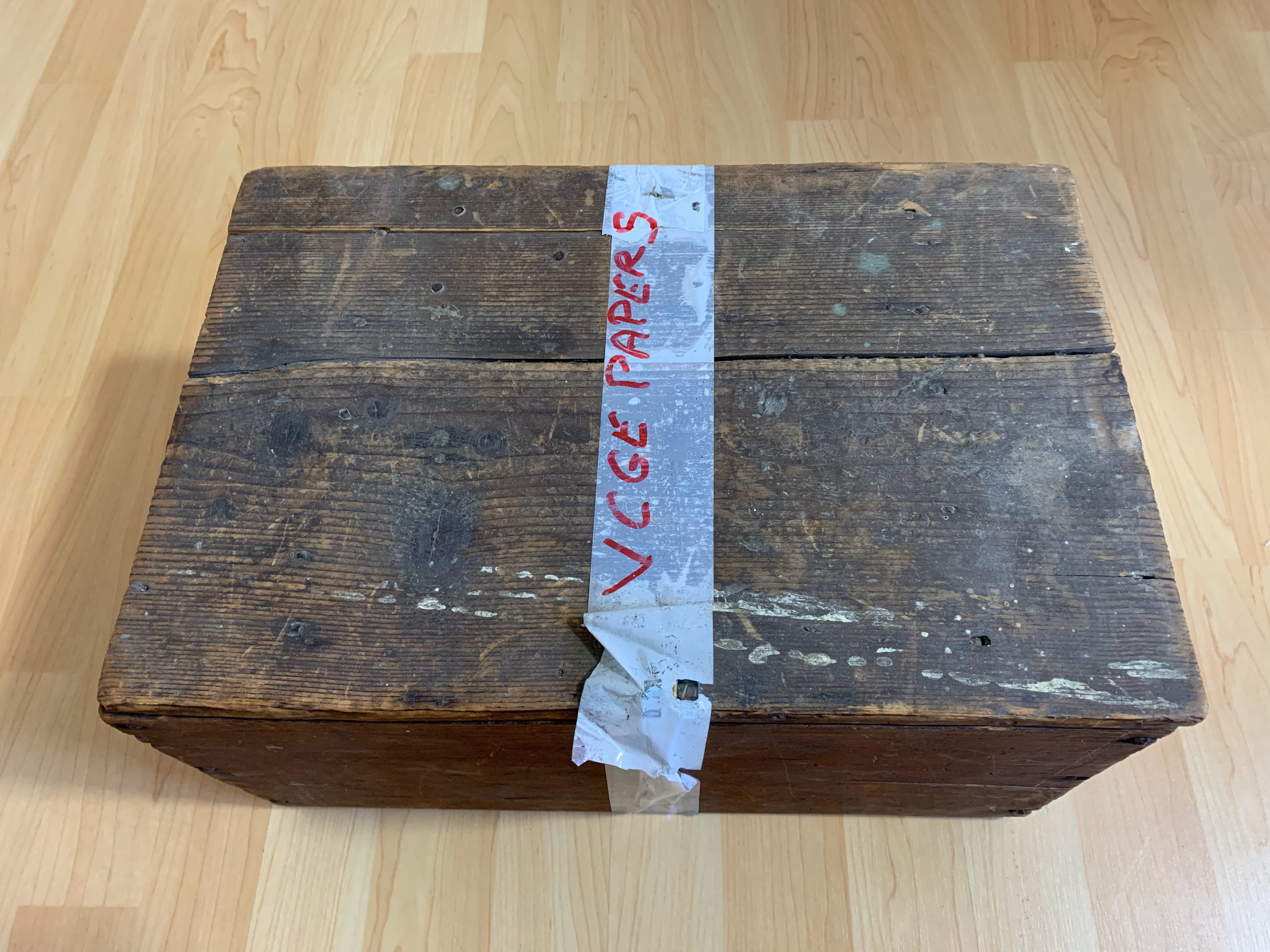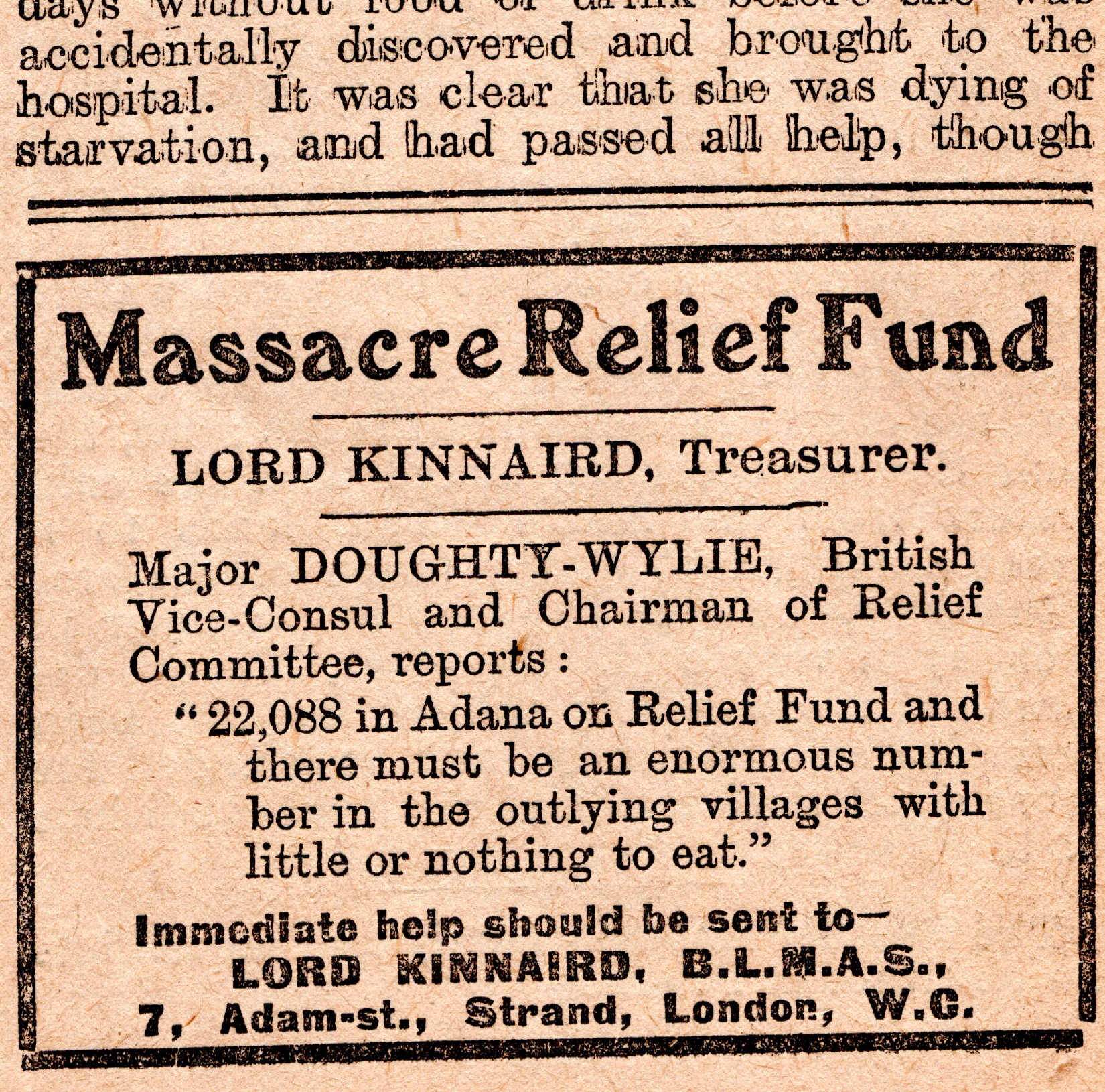.png)
Papers from the British Royal Navy's response to the Adana Massacres - 1909
This site contains scans of about 150 pages of material relating to the 1909 Adana Massacres in Turkey (now Türkiye). The documents all relate to the response of the British Royal Navy ship HMS Swiftsure, and of the British Vice-Consul Major Charles Doughty-Wylie, including attempts to halt the massacre and to assist its victims.
Important Content warning: The historical material on this site contains some racist and culturally prejudiced language and opinions.
If you republish or reference any of this material (images or text) please acknowledge www.kiteason.com and let me know at victoreason.adana1909@gmail.com.
In the summer of 2022, I was clearing the loft in my mother's old house when I came across a battered wooden box marked "VCGE papers". VCGE was Victor Cecil Gould Eason, my paternal grandfather. I never met Victor - he died a few years before I was born - and despite being a font of anecdotes on other subjects, my father rarely mentioned him. All I really knew about Victor was that he had been a Royal Navy paymaster. RN paymasters were not only responsible for pay, but also undertook various logistical and secretarial duties. I wasn't hopeful that the box would contain anything of real interest.
.png)


However, at the very top I came across some flimsy blue typewritten sheets, headed Massacres at ADANA - Asia Minor, April 1909. These turned out to be a rather journalistic, but nonetheless first-hand account of the immediate British response to the Adana Massacres. The massacres were a series of atrocities committed against Armenian Christians in the region around Adana in southern Turkey. They were a precursor to the much larger Armenian Genocide. Reading the document, I was surprised to see that - journalistic though it was - the article was signed V. Eason. Could it be that in addition to his more mundane naval activities, Victor moonlighted as a journalist?
.png)
Deeper in the box, I came across a tightly stuffed envelope marked ADANA, and addressed to Lieutenant H W Eason, Victor's father. This contained a treasure trove of documents related to the British naval response to the massacres. These include:
It seems that Victor decided he was witnessing historically important events, and rather than see the documents he worked with destroyed, he gathered them up and mailed them to his father. He was clearly nervous about doing so, as in his letter he urges his parents to "be very careful and discrete with them". Wanting to bring the happenings to the attention of the world, he also wrote an article - and this must have been in collaboration with Doughty-Wylie, because it was published along with an appeal for donations to a "Massacre Relief Fund".

Some of these documents will already be available to historians. For instance I expect that some would have been received by the British Foreign Office, and would thus have appeared in government papers. However others, including Victor's letter, have I think never before been publicly available.
Among the most striking documents are the daily handwritten accounts by Major (later Lieutenant Colonel) Charles Doughty-Wylie, the British Acting Vice-Consul based in Mersina (now Mersin), 40 miles from Adana. In these notes he records the ebb and flow of the violence, the slow progress of the Turkish government response, and his own attempts to quell the massacres and help the victims.

Doughty-Wylie was a strong Turkophile and a fascinating figure. His love of Turkey did not stop him participating on the British side at Gallipoli - although reputedly he did so carrying a cane instead of a gun, because he did not want to shoot at his former friends. (Incidentally, both Victor and my maternal grandfather Brian were also at Gallipoli; Victor in relative safety as the Captain's secretary on a battleship, Brian in considerably less safety in charge of a whaler during the initial assault.)
Doughy-Wylie was killed at Gallipoli and was awarded a posthumous VC. To discover a number of original documents bearing his signature was quite a feeling.
Here are links to Google Photos albums containing high-resolution scans of every document I found in Victor's collection. I will let the documents speak for themselves, except to point out that the racial, national and religious attitudes expressed are very much "of their time". I don't condone or excuse them. I acknowledge that the viewpoint throughout is that of white men serving the British Empire.
I've divided up the albums the same way that Victor bundled the papers. They are in suggested reading order.
In due course I aim to provide transcriptions for all the bundles. Where these are not yet available you will have to read the raw images.
Covering letter - Victor Eason to Henry and Jane Eason - 5th May 1909
.png)
A few days after the events, Victor wrote to his mother and father, letting them know that he would be sending them "practically the actual dispatches sent to the Ambassador at Constantinople" and urging them to "be very careful & discrete with them as they are very confidential".
This letter also contain's Victor's account of his own involvement in the relief efforts.
Although written after most of the other material here, this is worth reading first for context.
First Dispatch - Charles Doughty-Wylie to Ambassador - 14th April 1909
.png)
Two and a half weeks after the initial riots (which started on 1st April 1909), and while disturbances were still going on, Doughty-Wylie wrote to the British Ambassador in Constantinople. He had been shot in the arm, so his dispatch was dictated to Victor. Doughty-Wylie gives an account of events around Adana, and his own involvement. At the end there is a separate communication in which Doughty-Wylie gives a brief account of the killings of two American missionaries.
Second Dispatch - Charles Doughty-Wylie to Ambassador - 21st to 24th April 1909
.png)
On 24th April, Doughty-Wylie wrote again to the Ambassador giving an update on the situation. This document is given in both hand-written and typed form, having presumably been typed up by Victor.
Second Massacre - Charles Doughty-Wylie to Ambassador - 25th to 27th April, and letter to Captain Thursby 26th/27th April 1909
.png)
Killing broke out again on 26th April and Doughty-Wylie wrote again to the Ambassador with details. Again this document is given in both hand-written and typed form.
Letters from Charles Doughty-Wylie to Captain Thursby - 28th/29th April 1909
.png)
Three letters from Doughty-Wylie to Captain Thursby of HMS Swiftsure giving updates for events on 28th and 29th April.
Dispatches to the Ambassador and letter from Charles Doughty-Wylie to Captain Thursby - 30th April to 2nd May 1909
.png)
Further dispatches to the Ambassador, and a letter to Captain Thursby.
Signal from Commander Carver to Captain Thursby (undated)
.png)
An undated naval signal from Commander Carver of HMS Swiftsure to Captain Thursby giving a brief update on the situation.
Victor Eason's article in The Globe
.png)
Victor appears to have written a rather journalistic account of the massacre, which was published in The Globe Newspaper. This is where we find the most unacceptable racial and cultural opinions. Includes both Victor's typescript and the article as published in two parts.
Box and Envelopes
.png)
The box and envelopes in which I found these documents. The envelope is addressed to Victor's father Henry William Eason, who himself had a distinguished naval career.
Kit Eason - 2022